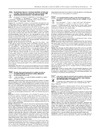Identificador persistente para citar o vincular este elemento:
https://accedacris.ulpgc.es/jspui/handle/10553/76017
| Campo DC | Valor | idioma |
|---|---|---|
| dc.contributor.author | Irurita Latasa, M. | en_US |
| dc.contributor.author | Irurita, J. | en_US |
| dc.contributor.author | López, L. | en_US |
| dc.contributor.author | Saez, M. N. | en_US |
| dc.contributor.author | Martínez de Saavedra, M. T. | en_US |
| dc.contributor.author | Culebras, C. | en_US |
| dc.contributor.author | Déniz, C. | en_US |
| dc.contributor.author | Vina, A. | en_US |
| dc.contributor.author | Chirino Godoy, Ricardo | en_US |
| dc.contributor.author | Sanchez, F. | en_US |
| dc.date.accessioned | 2020-11-26T09:23:11Z | - |
| dc.date.available | 2020-11-26T09:23:11Z | - |
| dc.date.issued | 2011 | en_US |
| dc.identifier.issn | 0195-668X | en_US |
| dc.identifier.other | WoS | - |
| dc.identifier.uri | https://accedacris.ulpgc.es/handle/10553/76017 | - |
| dc.description.abstract | Patients with premature coronary syndromes impose an enormous challenge of diagnosis and long-term management. Traditional markers can be ephemeral or unespecific and may fail to identify patients who are at high risk for cardiovascular disease, to develop severe disease or have poorer outcomes. Traditional risk factors do not explain all of the risk for CHD, and emerging risk factors have the potential to improve global risk assessment. Aim: We analysed a common polymorphism in the Cholesteryl Ester Transfer Protein (CETP) gene (Taq1B) related to lipid profiles. Method: An atypical model was designed to compare a set of 570 male Canarian patients (P) with early onset acute coronary syndromes (under 55 years old) with 199 healthy, aged controls (c), far beyond the age of premature CHD (over 65 y-o). PCR-RFLP techniques rendered similar B1B1-B1B2/B2B2 allele distribution in both groups. Results: The mean age was 46 for patients (P) and 71 for controls (c); p<0.000. The case/control analysis showed significant differences (p<0.000) in the prevalence of family history of CHD (61 P/39% c), family premature CHD (35 P/7% c), dyslipidemia (71 P/53% c), hypertension (48 P/74% c), mean atherogenic index (log triglycerides/HDL-cholesterol: 0.63 P/0.47 c) and exercise tolerance (METS: 10 P/7 c). The first ACS was myocardial infarction in 64% and angina in 46%; multivessel disease was present in 55%, 63% underwent revascularisation (PCI 62, CABG 7%; restenosis rate 9%) and 33% had recurred ACS. B2B2 genotype was more common among patients (15 P/10% c; p<0.045); while variant homozygous genotype was associated with multivessel disease (47/37%; p<0.013). Our model predicted 74.1% of premature CHD with family history of CHD and common CEPT genotype. A logistic regression model built with risk factors, genotypes, clinical features and atherogenic index: depicted dyslipidemia (p<0.019) and variant CETP genotype (p<0.031) to explain 72.5% of multivessel disease in patients with angina. Conclusions: Despite an unusual model with a considerable age gap our young patients had a very high prevalence of risk factors. Variant CETP genotype is an inexpensive suitable marker for premature CHD and multivessel disease, thus contributing to characterise individual variability. | en_US |
| dc.language | eng | en_US |
| dc.relation.ispartof | European Heart Journal | en_US |
| dc.source | European Heart Journal [ISSN 0195-668X], v. 32 (sup. 1), p. 97, P696, (Agosto 2011) | en_US |
| dc.subject | 320501 Cardiología | en_US |
| dc.title | CETP polymorphism adds to the characterisation of premature coronary heart disease and multiple vessel disease | en_US |
| dc.type | info:eu-repo/semantics/conferenceObject | en_US |
| dc.type | ConferenceObject | en_US |
| dc.identifier.isi | 000208702701360 | - |
| dc.description.lastpage | 97 | en_US |
| dc.description.firstpage | 97 | en_US |
| dc.relation.volume | 32 | en_US |
| dc.investigacion | Ciencias de la Salud | en_US |
| dc.type2 | Actas de congresos | en_US |
| dc.contributor.daisngid | 10201396 | - |
| dc.contributor.daisngid | 1533088 | - |
| dc.contributor.daisngid | 28238373 | - |
| dc.contributor.daisngid | 13086386 | - |
| dc.contributor.daisngid | 8031166 | - |
| dc.contributor.daisngid | 1456553 | - |
| dc.contributor.daisngid | 10570973 | - |
| dc.contributor.daisngid | 4367394 | - |
| dc.contributor.daisngid | 880609 | - |
| dc.contributor.daisngid | 3720393 | - |
| dc.description.numberofpages | 1 | en_US |
| dc.utils.revision | Sí | en_US |
| dc.contributor.wosstandard | WOS:Latasa, MI | - |
| dc.contributor.wosstandard | WOS:Irurita, J | - |
| dc.contributor.wosstandard | WOS:Lopez, L | - |
| dc.contributor.wosstandard | WOS:Saez, MN | - |
| dc.contributor.wosstandard | WOS:De Saavedra, MTM | - |
| dc.contributor.wosstandard | WOS:Culebras, C | - |
| dc.contributor.wosstandard | WOS:Deniz, C | - |
| dc.contributor.wosstandard | WOS:Vina, A | - |
| dc.contributor.wosstandard | WOS:Chirino, R | - |
| dc.contributor.wosstandard | WOS:Sanchez, F | - |
| dc.date.coverdate | Agosto 2011 | en_US |
| dc.identifier.supplement | 1 | - |
| dc.identifier.ulpgc | Sí | en_US |
| dc.description.sjr | 4,935 | |
| dc.description.jcr | 10,478 | |
| dc.description.sjrq | Q1 | |
| dc.description.jcrq | Q1 | |
| dc.description.scie | SCIE | |
| item.grantfulltext | open | - |
| item.fulltext | Con texto completo | - |
| crisitem.author.dept | GIR IUIBS: Diabetes y endocrinología aplicada | - |
| crisitem.author.dept | IU de Investigaciones Biomédicas y Sanitarias | - |
| crisitem.author.orcid | 0000-0002-5681-8931 | - |
| crisitem.author.parentorg | IU de Investigaciones Biomédicas y Sanitarias | - |
| crisitem.author.fullName | Chirino Godoy,Ricardo | - |
| Colección: | Actas de congresos | |
Visitas
58
actualizado el 17-feb-2024
Descargas
14
actualizado el 17-feb-2024
Google ScholarTM
Verifica
Comparte
Exporta metadatos
Los elementos en ULPGC accedaCRIS están protegidos por derechos de autor con todos los derechos reservados, a menos que se indique lo contrario.
